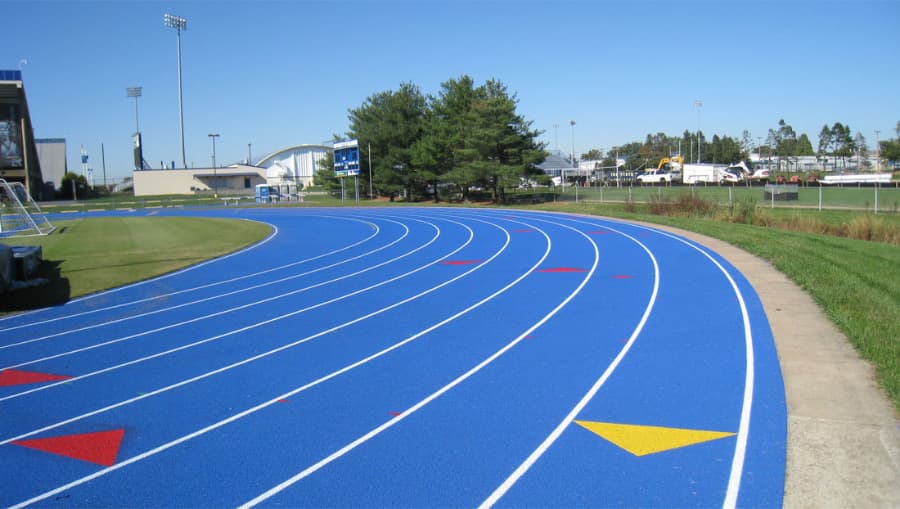
In almost every sport, athletes are seen running back and forth for hours on end in a stunning display of their physical abilities and stamina. But how did they get to that level of performance? Aside from a lot of discipline, one of the most consistently used facilities in any training regimen is a running track. Whether indoor or outdoor, arguably every athlete has spent numerous hours bolstering their aerobic capacity on that rounded rectangle. But not all tracks are the same, and while there are a handful of surface materials used in running track installation, it can be broken down into two distinct categories: soft surfaces vs. hard surfaces. Here, American Athletic Track and Turf explains the difference between soft and hard running track surfaces so your school or recreational facility can make the right decision.
A Quick Look at Soft Surfaces
Endurance training is by no means an easy feat, and many people dedicate their lifestyles to it. Ranging anywhere from a light jog on the beach to a cross-country run that twists and turns through the woods, these long runs are often done on a softer surface. Some trails have woodchips strewn along them, while others are often well-trodden dirt paths. The point? Whatever soft material is being used, these surfaces provide extra shock absorption that makes running long distances much more viable. When choosing a track intended for long-distance runs, consider how well the material absorbs the impact of footfall, as this correlates directly to time spent running.
Clay and cinder tracks provide a decent level of shock absorption, making them a friendlier choice for your ankles and joints, and are relatively cheap when looking for a new running track installation. However, these deteriorate when water or moisture is introduced to the surface, and the low price of the material is offset by the cost of maintenance, especially on outdoor tracks in temperate environments.
What about Hard Surfaces?
Although running for endurance has plenty of benefits, there are sports that require fast breaks and explosive power. Whether you’re sprinting for a touchdown, stealing second base, or clearing hurdles, the ability to generate maximum speed in the shortest amount of time is a cornerstone in great athletics. Although many of these sports take place on their own kind of field, a track with a hard surface is often used during training.
When considering which type of track surface will best suit your athletes, consider installing a harder surface. Although surfaces like concrete and asphalt are less forgiving on the body, competitors of all kinds have noted that their sprint times are faster on harder surfaces. They also tend to break more of their personal records on hard tracks. Asphalt, meanwhile, works equally well for indoor and outdoor tracks.
Synthetic Surfaces: A Happy Medium
In recent years, there has been an uptick in the installation and use of synthetic track surfaces. Most synthetic tracks are either made from latex or polyurethane, making them an ideal choice for indoor and outdoor tracks. Synthetic tracks are budget-friendly both short-term and long-term, thanks to the nature of the material. The flexible consistency of the base material provides ample shock absorption for the long-distance runners without completely dispersing the explosive power used by short-distance runners and other athletes, making this the ideal middle ground. For more information on the synthetic running track installation offered by American Athletic, contact us today.


